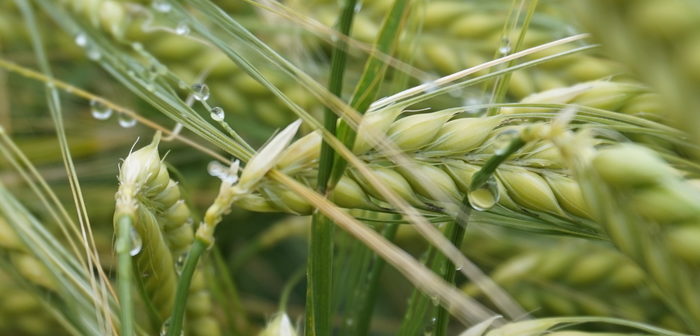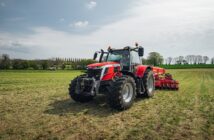Six row BYDV tolerant winter barley, Rafaela was introduced to the market last year from breeders Limagrain UK. A year on and the variety has proven the value of its BYDV tolerance trait, alongside offering valuable agronomic characteristics such as excellent performance in black-grass situations.
In the absence of neonicotinoid seed treatments, this autumn, growers will be looking for different management strategies to contain the barley yellow dwarf virus (BYDV).
Whilst all cereals and grasses are affected, the biggest impact will be on barley. Symptoms are bright yellow leaves, which develop into large areas of yellowing and stunted plants.
To get the best control possible, cultural control methods will need to be understood, adapted and combined with timely pyrethroid applications, says Ron Granger of plant breeders Limagrain UK.
“The impact on yield can be significant, with higher losses coming from earlier infection, which can be as much as 2.5t/ha,” he says.
A new and exciting variety available to growers this autumn is Rafaela; a conventional six-row winter barley that carries the traits for Barley Yellow Dwarf Virus (BYDV) tolerance and Barley Yellow Mosaic Virus (BaYMV) resistance.
Mr Granger points out that it’s important to note that it’s a tolerance to BYDV rather than a resistance, which means that the variety can be infected with the virus but does not show the associated symptoms.
“Think of it as a natural plant immune system – you may still see some leaf yellowing but without the associated impact on yields – so it is a really valuable tool in the fight against BYDV.”
“However, farmers will still need to manage aphids,” he says. “Spraying in mid-October and in mid-November with pyrethroids is the best approach, as this targets both sets of aphid arrivals.”
“The virus is still circulating in the plant – the gene does not break its lifecycle but the tolerance provides a form of risk management if the weather turns and spraying is delayed.”
“The trait provides a get out of jail card, but it still needs protecting.”
However there’s more to Rafaela than its BYDV tolerance and ability to produce high yields, he adds. “It’s vigorous and early to mature, making it an ideal entry to oilseed rape, or if wanting to get something drilled whilst delaying drilling winter wheat.”
Work conducted at Agrii’s black-grass trials at Stow Longa showed Rafaela to be one of the most competitive barleys for black-grass, says Agrii’s head of agronomy, Colin Lloyd.
“In the trials, we only counted 45 black-grass ears/m2 in the Rafaela, compared to 96 ears/m2 in the best two-row winter barley, California.”
‘It’s right up there with the hybrids for black-grass competitiveness’.
“It really gets up and away – it’s quick in the spring- and this gives it the competitive advantage.”
In Agrii trials last year which were taken to harvest, Margin Over Input Costs (MOIC) were compared between barleys in this grass-weed scenario.
“Eight varieties of winter barley were drilled on the 30th September 2018, which when taken to harvest yielded an average of 8.92t/ha, producing an average gross margin of £904/ha.”
“Of these, the best 2-row was California which yielded 9.01t/ha, producing a MOIC of £933/ha. However Rafaela out-yielded the California at 9.19t/ha, producing a GM of £954/ha – that’s a significant increase of £21/ha.”
But compare this to winter wheat drilled right next to these plots on the same day, he adds.
“We drilled 23 varieties which averaged 5.12 t/ha with an average GM of £184 per hectare. The difference is clear, Rafaela makes money and winter wheat loses money in this earlier drilled slot in a blackgrass situation – a sobering thought.”
Limagrain continues to evaluate the best ways of using Rafaela’s genetics for on-farm performance.
“We are doing work with a range of industry partners on both naturally infected and inoculated aphid trials, and we are also testing the variety in treated and untreated insecticide trials. This will provide us with the depth of information on how and where we can fully exploit Rafaela’s exciting genetics to their full potential, says Mr Granger.




